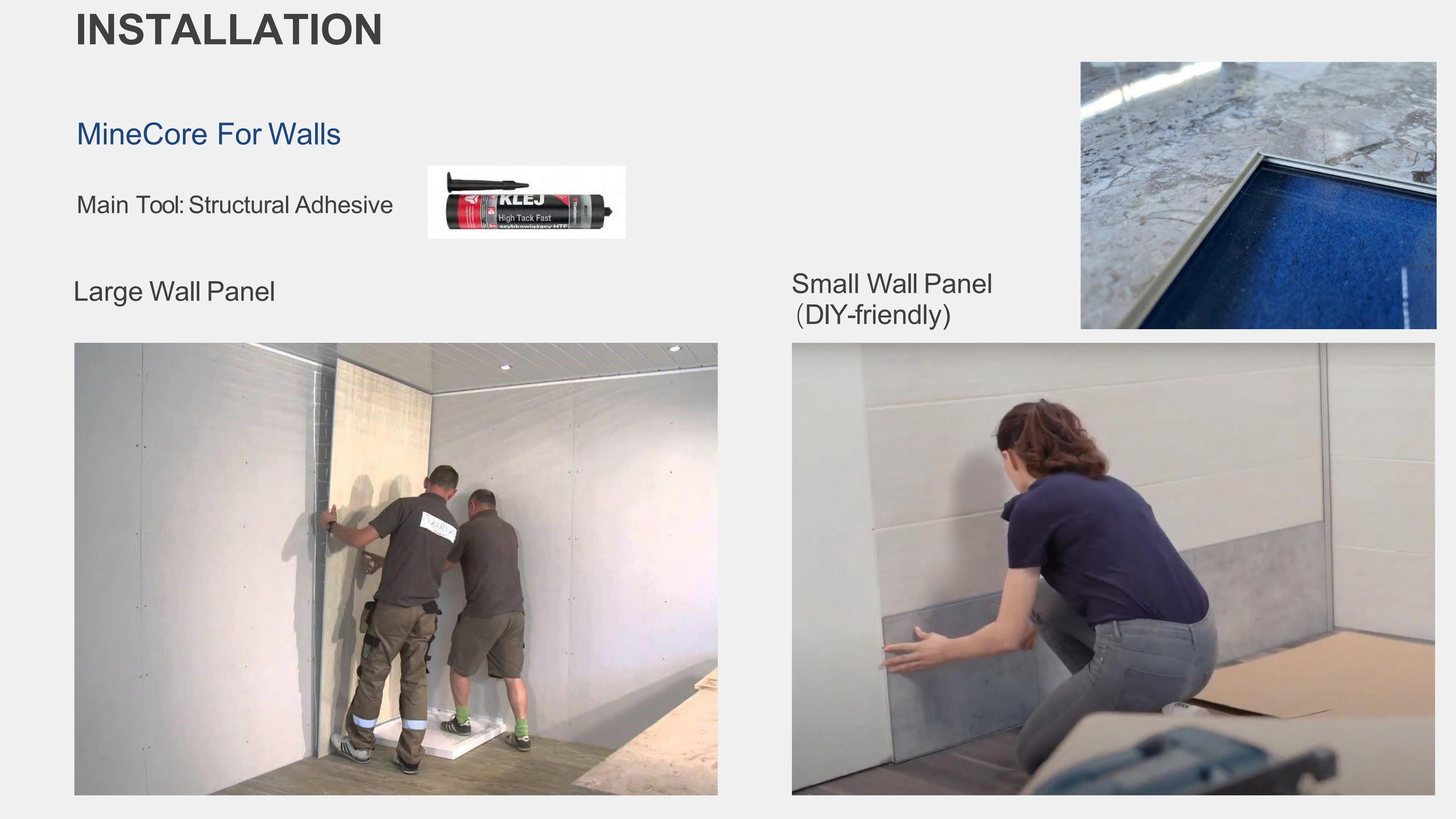QuickStone wall panels have quickly become the choice of builders and project managers for transforming spaces. Known for their strength, sleek finish, and quick installation, QuickStone panels are what it is to be modern when it comes to beauty and function.
Whether you are working on a commercial build, a residential project, or are renovating an existing space, understanding the basic principles of installation is critical in getting the finishes to last and look perfect. This in-depth wall panel installation guide is your walkthrough on every step, the expert tips, and best practices for installing QuickStone like a pro.

1.Why Choose QuickStone Wall Panels?
QuickStone panels have become increasingly popular as a material used in construction; however, it must be understood why they are popular before one goes into the steps of installation.
Durability: QuickStone panels are constructed of high-density stone composite materials, rendering panels impact-, scratch-, and environmental-wear resistant. As a result, you can rest assured of the durability of your installations, as they would require fewer repairs or replacements in the future.
Lightweight: While looking like stones, these panels are substantially lighter than conventional stone cladding, and thus, facilitate easier handling and installation. These two resultant benefits result in reduced worker fatigue and speeds up the whole process.
Design Versatility: Coming in a range of textures, colors, and finishes, there are limitless design possibilities possible with QuickStone panels as they adapt to modern, rustic, or classic architectural styles.
Speedy Installation: Entrusted for quick assembling, QuickStone panels aid in bringing down labor time and thus total project costs, something that is critical during those times when tight schedules need to be met.
Indeed, these advantages make QuickStone panels a significant consideration for commercial facades and accent walls within interiors, as well as feature zones and beyond.
2.Tools and Materials You’ll Need
To install the QuickStone any easier, you would have to have additional supplies in hand:
Clean cloth or brush for removing dust or residues encountered during installation;
While having the right tools and materials probably will help with maintaining the workflow and the quality of the installation that is yet to come.

Step 1: Prepare the Surface
Before anything else, surface preparation sets the requirement for any successful wall panel installation.
Check the wall thoroughly: look for cracks, loose paint, dampness, or any contaminants like dust, grease, oils that can be an obstacle when panel adhesion or fixings take place.
Repair uneven areas: Use plaster, filler, or leveling compound to correct. If very large, put furring strips or a subframe to create a perfectly flat plane.
It takes a little time to prepare surfaces, but it's really quite important-this is the step that, when neglected, second minds the installation failures and expensive rework. The time spent here pays off in the long run with durability and appearance.
Step 2: Measure and Plan Your Layout
Accurate measurements and layouts greatly save time and unnecessary expenditure brought about by mistakes.
Take proper measurements of the walls: Heights, widths, and any other interruptions are taken note of, such as windows, doors, and electrical outlets. This exercise should be made well documented for it will ultimately help plan for better panel cuts.
If done properly at this stage, the accuracy will reduce errors substantially, thus increasing the speed of the installation process, ensuring smooth workflow.
Step 3: Cut Panels to Size
Standard panel sizes will not necessarily fit with every dimension of the wall.
Precise cutting preserved the integrity of the panels, minimized potential problems in their installation, and lent the wall a general air of cleanliness and refinement to its finished appearance.
Step 4: Attach the Panels to the Wall
A panel installation is called for now, wherein the securing of the panel itself should be emphasized.
Option A: Mechanical Fixing
Spacing of screws should, in most cases, be according to the guidelines, usually every 12 to 16 inches along the edges and midpoints for larger panels.
Option B: Adhesive Fixing
Another approach that many professionals use is the combination of both fixing methods in order to secure the panels structurally and to increase their life span in high traffic or exposed situations.
Step 5: Install the Remaining Panels
Retake the measuring, cutting, and fixing for the rest of the panels.
"Consistency and attention to detail in this stage are critical. Early misalignment of a few millimeters accumulates to many meters of problems down the road," it requires careful thought before starting.
Step 6: Seal the Joints and Edges
Sealing buildings is of utmost importance in aesthetics as well as protection.
Sealing keeps your installation safe against environmental factors while creating neat, sharp lines and hiding small less-than-perfect areas between panels to give that even overall look.
Step 7: Clean and Inspect Your Work
With the final touches, you enable your installation to have a professional appearance and long life.
Carefully wipe each panel with a soft cloth moistened with an approved mild cleaning agent to remove any dust, glue residue, fingerprints, or smudges.
A thorough cleanup and inspection always safeguard your reputation and ensure that the project achieves the highest standards.

Common Challenges and How to Overcome Them
Panels are one of the important wall forms that present a lot of problems even to experienced builders. Here are some solutions to common problems:
Time preparation, patience, and practices will minimize hazards and improve the quality of your installation outcome.
The AnywayFlooring Advantage for Your Wall Panel Projects
If you are looking to get the best QuickStone wall panels or even if you are looking for expert advice for your next project, then there is nothing better than AnywayFlooring for you to partner with. We provide high quality wall panels which are made keeping in mind their durability, aesthetic value and ease of installation.
Today make that leap in taking your construction projects to the top with QuickStone panels from AnywayFlooring. Call us today and learn how we can personalize your wall panel installation guide as you peruse and explore our array of services.
Final Thoughts
Applying QuickStone wall panels is a method that can be intimidating at first. But with adequate preparation, the right tools, and a step-by-step procedure, builders and project managers can finish today with the same professional-looking finish in no time.
It is important to:
If you follow this guide to the letter, you will be taking QuickStone panel installation to the next level, producing really durable and aesthetically pleasing walls that your clients will love.

Are you ready to use QuickStone wall panels on the next job?
Visit AnywayFlooring today for expert advice and premium materials-the one-stop solution for fantastic wall panel installations.
English
Русский
العربية
Français
Español
Português
Deutsch
italiano
日本語
한국어
Nederlands
Tiếng Việt
ไทย
Polski
Türkçe
አማርኛ
Bahasa Melayu
ဗမာစာ
Filipino
Bahasa Indonesia
magyar
Română
Čeština
Српски
हिन्दी
فارسی
Kiswahili
Slovenčina
Slovenščina
Norsk
Svenska
українська
Ελληνικά
Suomi
Հայերեն
עברית
Dansk
اردو
বাংলা
Hrvatski
Eesti keel
नेपाली
latviešu
Euskara
Български
Català
Hausa
íslenska
Lietuvių
Malti
isiZulu















